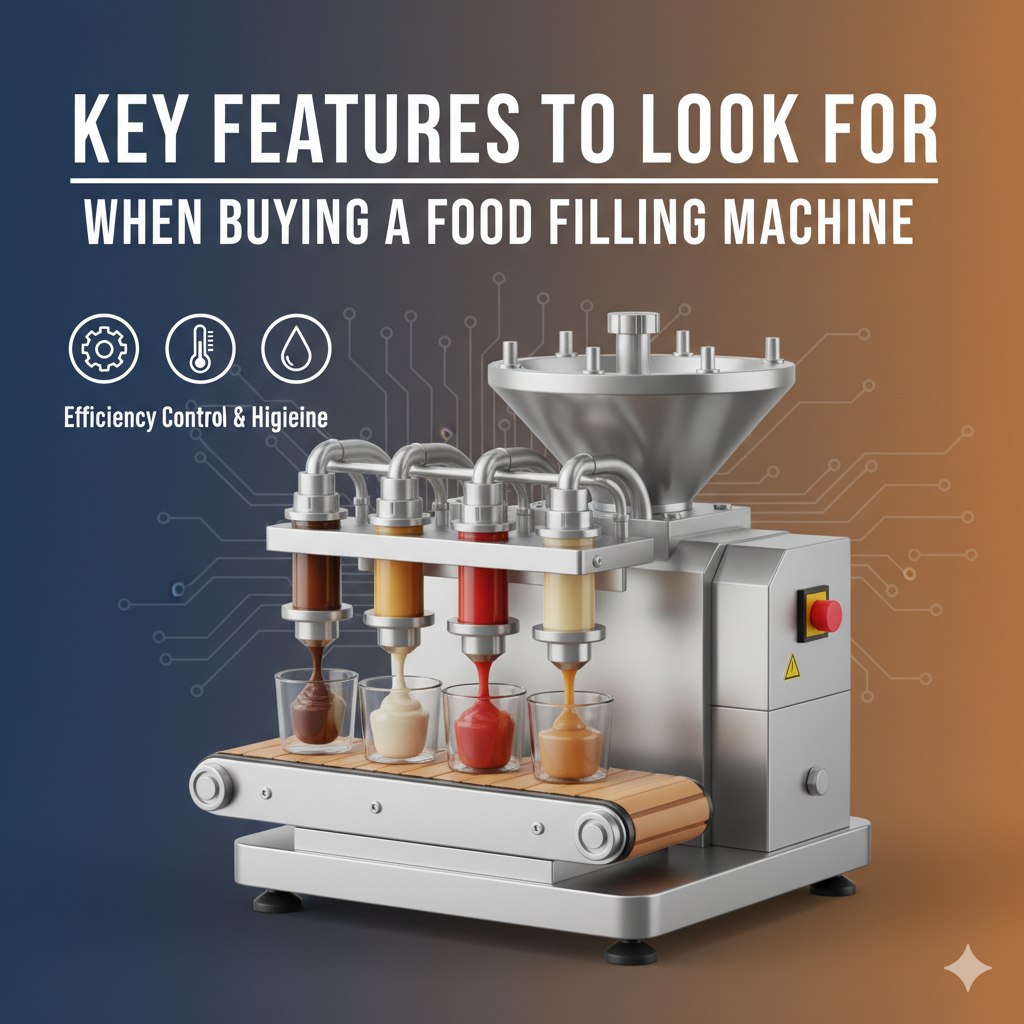Investing in the right food-filling equipment is a crucial decision that can significantly impact your production efficiency and product quality. Whether you’re a startup venture or an established business looking to upgrade your production line, understanding the essential features of filling equipment will help you make an informed purchase decision.
The food processing industry in the Middle East has experienced remarkable growth, with businesses increasingly seeking reliable automation solutions. When searching for a food-filling machine in the UAE, first-time buyers often feel overwhelmed by the technical specifications and varying options available. This comprehensive guide will walk you through the critical features you need to evaluate, ensuring you choose equipment that aligns with your production goals and budget.
Understanding Your Production Requirements
Before diving into specific features, it’s important to assess your production needs. Consider the type of products you’ll be filling—whether liquids, pastes, granules, or powders—as this determines the machine type you require. Calculate your desired output volume, available floor space, and budget constraints. These foundational considerations will help narrow down your options when consulting with a food-filling machine manufacturer in the UAE.
Filling Speed and Production Capacity
One of the most critical specifications to evaluate is the machine’s filling speed, typically measured in units per minute or hour. This directly impacts your production throughput and ability to meet market demands.
Entry-level semi-automatic machines may handle 20-30 containers per minute, suitable for small-scale operations or speciality products. Mid-range automatic systems can process 60-120 units per minute, ideal for growing businesses. High-speed industrial machines achieve 200+ fills per minute, designed for large-scale manufacturing operations.
Consider not just your current production volume but also anticipated growth over the next 3-5 years. Purchasing a machine with scalable capacity prevents premature equipment obsolescence and provides better return on investment.
Filling Accuracy and Consistency
Precision in filling is non-negotiable in the food industry. Inaccurate fills lead to product giveaway (overfilling), regulatory non-compliance (underfilling), and customer dissatisfaction. Look for machines offering accuracy within ±0.5% to ±1% of the target fill volume.
Advanced systems incorporate servo-driven technology, load cells, or flow meters to ensure consistent fills across every container. This precision becomes especially critical when handling expensive ingredients or products subject to strict weight regulations.
Request demonstration fills during equipment evaluation and ask manufacturers about their accuracy validation protocols. Quality manufacturers provide detailed calibration procedures and accuracy certifications with their equipment.
Versatility and Product Compatibility
Your filling machine should accommodate your current product range and allow flexibility for future product development. Evaluate whether the equipment handles varying viscosities, from water-thin liquids to thick pastes or sauces.
Container compatibility is equally important. Can the machine process different bottle sizes, jar types, or pouch formats? Quick-change parts and tool-free adjustments minimise downtime when switching between products or package formats.
Some advanced systems feature programmable recipes that store parameters for different products, enabling operators to switch production runs with minimal setup time. This versatility proves invaluable as your product portfolio expands.
Maintenance Requirements and Accessibility
Regular maintenance directly impacts equipment longevity and consistent performance. Evaluate how easily you can access critical components for cleaning, inspection, and replacement.
Food-grade equipment should support comprehensive cleaning procedures, including Clean-in-Place (CIP) systems for liquid filling machines. Sanitary design with minimal crevices prevents contamination and simplifies hygiene protocols required in food processing.
Ask manufacturers about recommended maintenance schedules, availability of spare parts, and typical component lifespans. Equipment with readily available parts and clear maintenance documentation reduces costly production interruptions.
Consider the technical skill level required for routine maintenance. User-friendly designs with clear access panels and intuitive component arrangement enable your team to perform basic maintenance without specialised training.
Control Systems and User Interface
Modern filling machines feature sophisticated control systems ranging from basic mechanical timers to advanced PLC (Programmable Logic Controller) interfaces with touchscreen displays.
User-friendly interfaces with visual graphics, multilingual options, and intuitive navigation reduce operator training time and minimise errors. Advanced systems provide real-time production monitoring, error diagnostics, and data logging capabilities for quality control and traceability.
Integration capability with existing production line equipment and ERP systems enhances overall operational efficiency. Discuss automation requirements and communication protocols with potential suppliers to ensure seamless integration.
Build Quality and Construction Materials
The machine’s construction determines durability and compliance with food safety standards. Stainless steel (typically 304 or 316 grade) remains the industry standard for food-contact surfaces due to its corrosion resistance and ease of sanitisation.
Examine weld quality, surface finishing, and overall build craftsmanship. Well-constructed equipment withstands demanding production environments and maintains performance over years of operation.
Verify that machines comply with relevant international standards such as FDA, CE, or local UAE food safety regulations. Reputable manufacturers provide comprehensive documentation confirming regulatory compliance.
Read Also: Why Choose a Specialized Volkswagen Garage in Dubai Over a General Mechanic
After-Sales Support and Training
Technical support availability significantly impacts your production continuity. Evaluate the manufacturer’s service network, response times, and support channels. Local representation matters—suppliers with UAE-based service teams provide faster response than those requiring international technicians.
Comprehensive operator training ensures your team maximises equipment capabilities from day one. Ask about training programs, operational manuals, and ongoing technical consultation availability.
Warranty terms, spare parts availability, and upgrade pathways demonstrate the manufacturer’s confidence in their equipment and commitment to long-term customer relationships.
Making Your Investment Decision
Selecting the right food-filling machine involves balancing immediate needs with future growth potential. Prioritise features that directly impact your core requirements—accuracy, speed, and product compatibility—while ensuring the equipment meets food safety standards and maintenance accessibility requirements.
Take time to visit operational installations, request product trials, and thoroughly evaluate multiple suppliers. The right equipment partner combines quality machinery with responsive support, ensuring your investment delivers reliable performance for years to come.
By focusing on these key features and working with established manufacturers, you’ll secure filling equipment that enhances productivity, maintains product quality, and supports your business growth in the competitive food processing industry.
